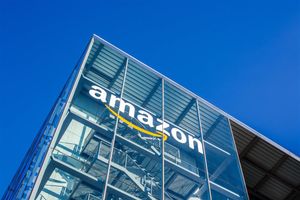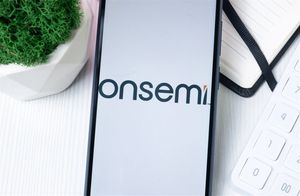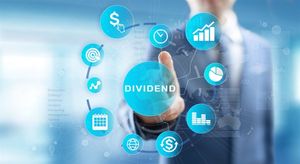
In a surprising turn of events, corporate share buybacks have surged to unprecedented levels, even as stock prices remain elevated and the global economic outlook appears increasingly uncertain. This aggressive capital allocation strategy, where companies repurchase their own shares from the open market, has become a defining characteristic of the current financial landscape, raising questions about long-term investment, market sustainability, and the broader implications for stakeholders.
The Unprecedented Wave of Capital Returns
The phenomenon of record-high corporate share buybacks is not merely a fleeting trend but a sustained strategic pivot by many of the world's largest companies. In 2023, S&P 500 companies collectively spent a staggering $795.2 billion on buybacks. This figure escalated further to an annual record of $942.5 billion in 2024, with financial analysts projecting an even more substantial $1.2 trillion in 2025. The first quarter of 2024 alone saw U.S. companies repurchase $238.6 billion worth of their own stock, underscoring the relentless pace of this activity.
This surge in buybacks is driven by a confluence of factors. Companies with significant cash reserves, often generated from strong earnings and, in the U.S., past tax cuts, are increasingly opting to return this capital to shareholders. Buybacks are also used as a signal of management's confidence in the company's future and a belief that its stock is undervalued. Furthermore, by reducing the number of outstanding shares, buybacks mechanically enhance key financial ratios such as Earnings Per Share (EPS), Return on Equity (ROE), and Return on Assets (ROA), making a company appear more attractive to investors. For shareholders, buybacks offer a tax-efficient way to realize returns, often benefiting from lower long-term capital gains tax rates compared to dividends. In an environment where attractive internal investment opportunities for growth might be scarce, particularly amidst economic uncertainty, buybacks present a compelling alternative to letting cash sit idly or making potentially wasteful investments.
How This Might Reshape Market Dynamics
The pervasive trend of share buybacks carries significant implications for market dynamics, influencing valuations, investor behavior, and overall market stability. Historically, buyback announcements often trigger a positive market reaction, with stock prices typically seeing an immediate bump. Larger programs can even lead to substantial gains, reflecting the market's interpretation of buybacks as a strong signal of confidence and a commitment to shareholder value.
However, this enthusiasm is tempered by concerns that buybacks can artificially inflate a stock's price and EPS without a corresponding improvement in underlying operational performance or intrinsic value. While EPS may rise due to a reduced share count, critics argue that this mechanical boost can mask a lack of genuine growth. The concentration of buyback activity among a few colossal companies means their actions can exert a considerable influence on major market indices like the S&P 500, potentially distorting overall market valuations. This raises questions about the true health of the market when a significant portion of its upward momentum is driven by financial engineering rather than fundamental business expansion.
Companies heavily engaged in buybacks, such as Apple (NASDAQ: AAPL), which authorized a record $110 billion buyback in May 2024, and Alphabet (NASDAQ: GOOGL), with a $70 billion authorization in April 2025, are typically perceived as "winners" in the short term. Their stock prices often receive a boost, and shareholders benefit from increased EPS and a higher ownership stake. Similarly, Meta Platforms (NASDAQ: META), which authorized a $50 billion buyback in early 2024, and NVIDIA (NASDAQ: NVDA), with an $8.0 billion spend in Q1 2024 and a $60 billion program in 2025, have used buybacks to enhance shareholder returns. Major financial institutions including JPMorgan Chase (NYSE: JPM), Wells Fargo (NYSE: WFC), Bank of America (NYSE: BAC), Citigroup (NYSE: C), Goldman Sachs (NYSE: GS), Morgan Stanley (NYSE: MS), and Visa (NYSE: V) have also been significant participants. These companies benefit from improved financial ratios and often see their stock become more attractive to investors.
Conversely, companies that opt to prioritize long-term investments in research and development, capital expenditures, or strategic acquisitions over aggressive buyback programs might experience a relative lag in short-term stock performance. This can put pressure on management to consider buybacks to keep pace with market expectations. Furthermore, if buybacks are executed at inflated prices, companies risk squandering capital, ultimately diminishing long-term shareholder value and potentially leaving them vulnerable if economic conditions deteriorate.
Broader Implications and Industry Shifts
The surge in corporate share buybacks extends beyond individual company performance, carrying significant broader implications for the economy, industry trends, and the regulatory landscape. Critics argue that this aggressive focus on returning capital to shareholders, particularly wealthy ones, contributes to income inequality by diverting funds that could otherwise be invested in higher wages, employee training, or job creation. This raises fundamental questions about corporate responsibility and the allocation of capital in a society grappling with economic disparities.
Moreover, there are growing concerns about underinvestment in productive capacity. Funds channeled into buybacks could potentially be used for long-term growth initiatives such as innovation, research and development, or infrastructure improvements. A pervasive "short-termism" could emerge, where executives prioritize immediate stock price boosts to meet quarterly targets over sustainable, long-term strategic investments that drive innovation and economic progress. The technology and financial sectors are particularly prominent in their buyback activities, reflecting their robust cash flows and sometimes fewer immediate, high-return internal investment opportunities. This trend could influence capital allocation decisions across other industries, potentially leading to a broader shift in corporate strategy.
Historically, buybacks have faced scrutiny for their potential for market manipulation. While the SEC's Rule 10b-18 provides a "safe harbor" under certain conditions, concerns persist. In response to these growing anxieties, the U.S. government implemented a 1% excise tax on share repurchases as part of the Inflation Reduction Act of 2022. Regulators are also pushing for greater transparency, requiring companies to disclose more details about their buyback activities. These policy shifts signal a potential tightening of regulations, which could impact how companies across all industries approach capital allocation and shareholder returns in the future, possibly leading to stricter limits on timing, price, volume, and disclosure of buybacks.
What Comes Next: Navigating the Buyback Landscape
Looking ahead, the trajectory of corporate share buybacks will be a critical factor for investors and market observers. In the short term, the momentum behind buybacks is likely to continue, especially for companies with strong cash flows and limited immediate organic growth prospects. This could sustain upward pressure on stock prices, particularly for the large-cap companies leading the charge. However, increased regulatory scrutiny and potential further policy interventions could introduce new complexities and risks.
Companies will need to strategically evaluate their capital allocation decisions, balancing the immediate benefits of buybacks with the need for long-term investment in innovation, sustainability, and talent development. Market opportunities might emerge for companies that can articulate a compelling vision for growth that goes beyond financial engineering. Conversely, those that rely too heavily on buybacks without a robust underlying business strategy could face increased skepticism from investors and regulators. Potential scenarios include a continued expansion of buyback programs, a shift towards more balanced capital allocation strategies, or even a regulatory-induced slowdown in buyback activity. Investors should closely monitor corporate earnings reports for insights into cash flow generation and capital expenditure plans.
Conclusion: A Balancing Act for the Future
The current era of record-high corporate share buybacks represents a significant moment in financial markets, driven by a complex interplay of economic conditions, corporate strategies, and investor expectations. While buybacks can offer immediate benefits to shareholders through enhanced stock prices and improved financial ratios, they also raise important questions about long-term value creation, equitable wealth distribution, and the potential for market distortions.
Moving forward, the market will likely be characterized by a delicate balancing act. Companies will need to navigate the pressures of shareholder demands for immediate returns with the imperative for sustainable, long-term growth. Investors should look beyond superficial EPS boosts and delve into the underlying operational performance and strategic investments of companies. The increasing attention from regulators signals a potential shift towards greater accountability and transparency in capital allocation. Investors should pay close attention to any new legislative or regulatory developments that could impact corporate buyback policies. The lasting impact of this buyback phenomenon will ultimately depend on whether companies can harness their capital effectively to foster genuine innovation and growth, rather than solely relying on financial engineering to boost short-term stock performance.
This content is intended for informational purposes only and is not financial advice







